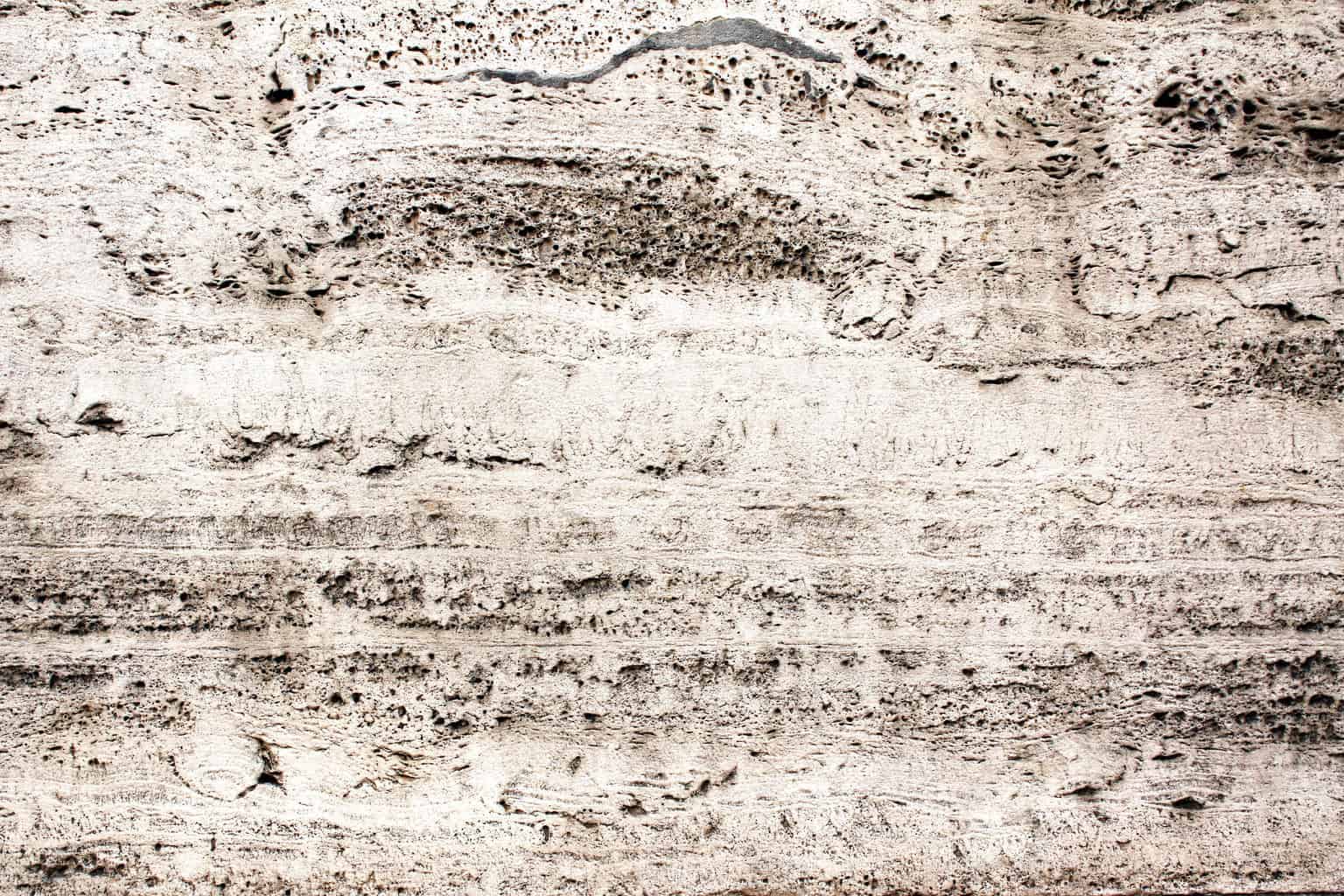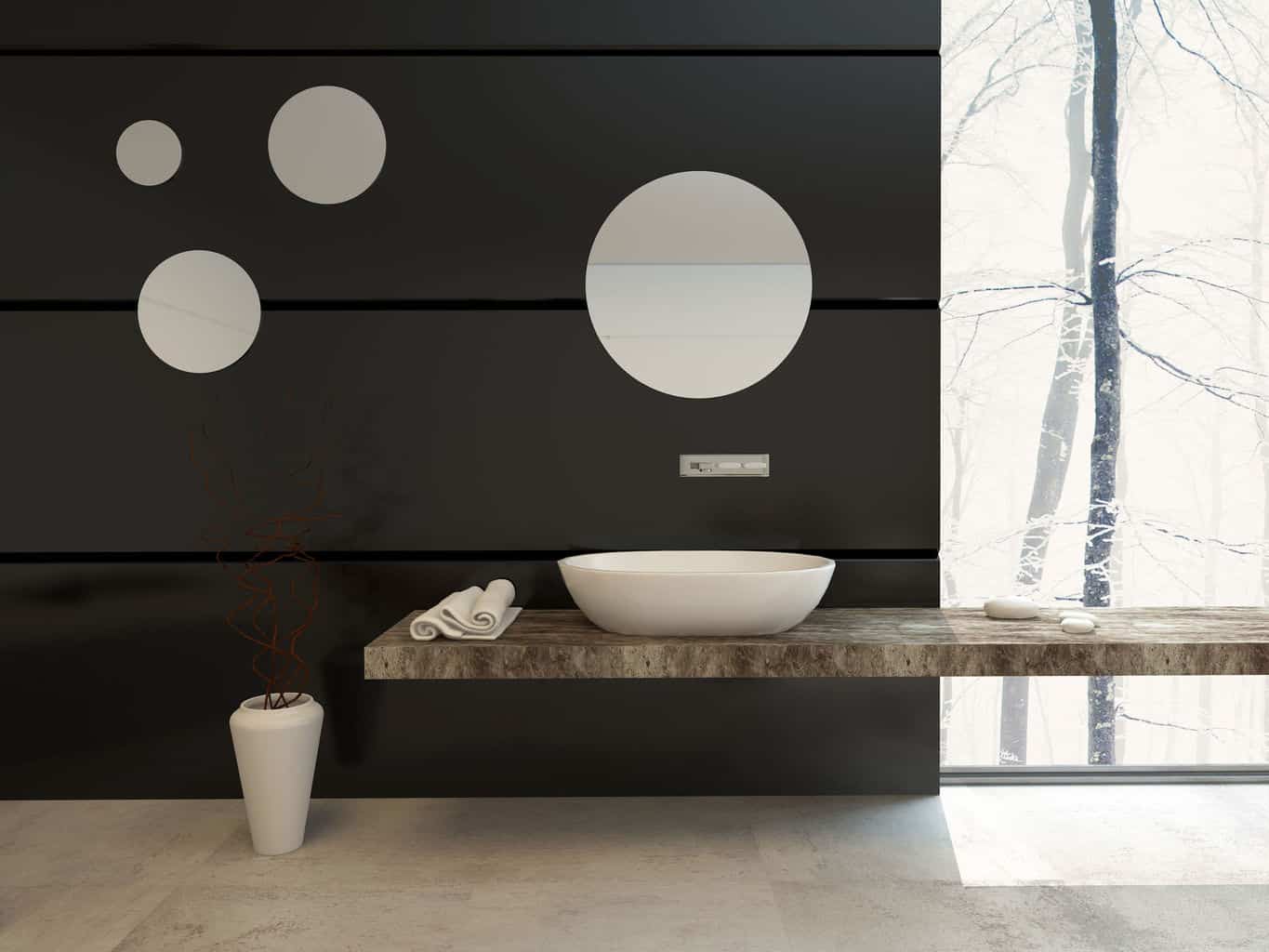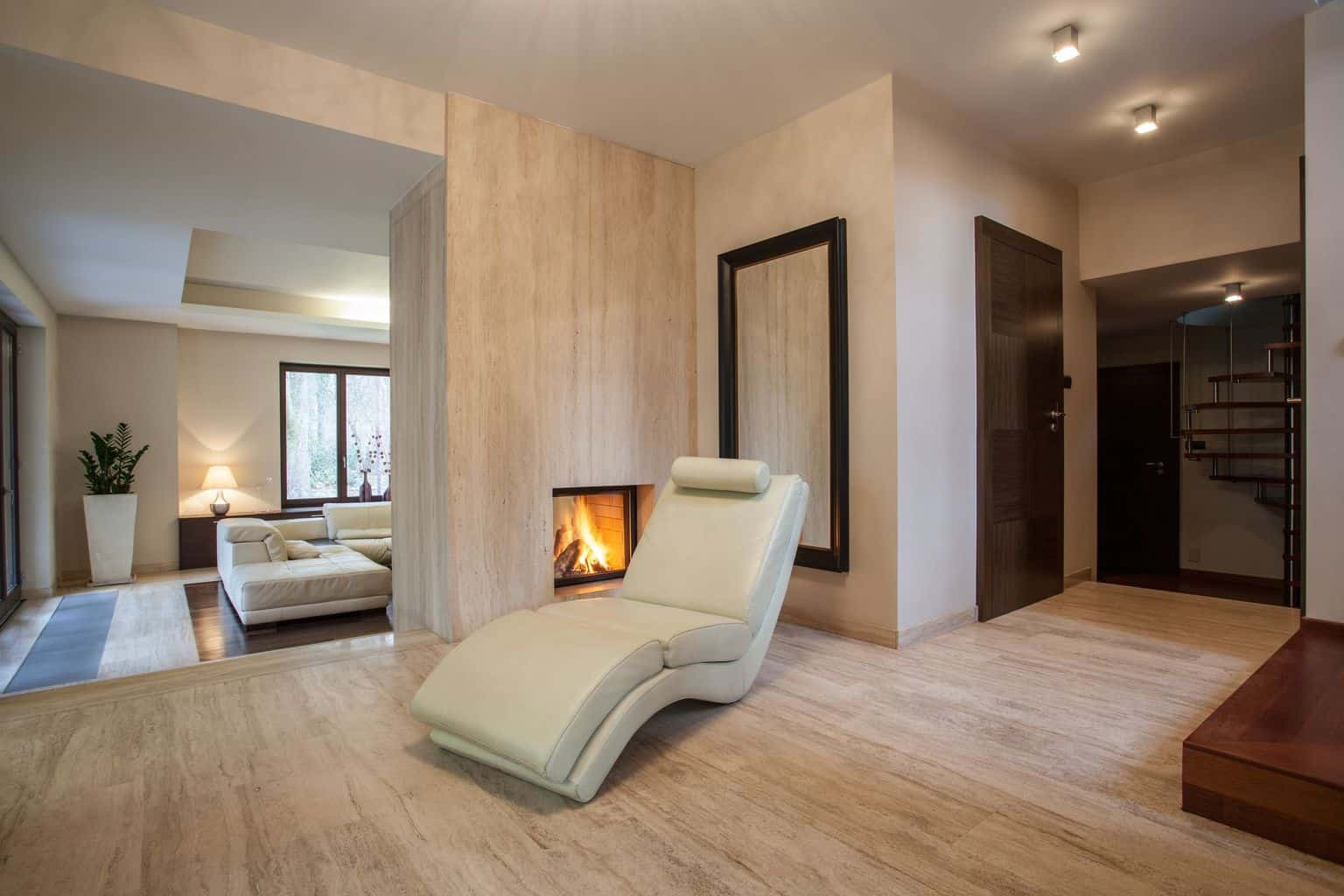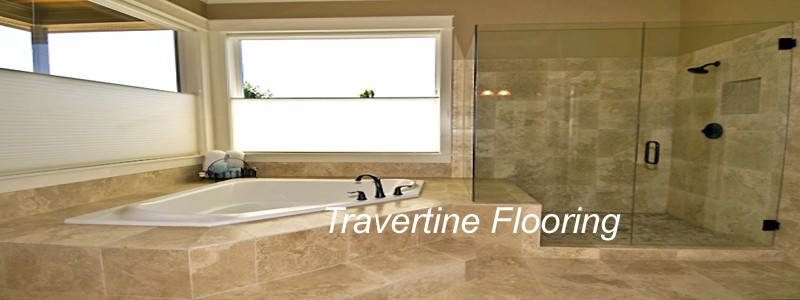Qualified Flooring is necessary for a home and what is says about the age of the home. Though there are many types of flooring, it is your responsbility to choose the consistent one for your home. Travertine flooring is there to help you acheive your goal.

Travertine flooring is not limited as it includes tile and mosaic. If you want to increase the durability of your flooring, then travertine mosaic is your only solution.
Travertine is basically a type of stone flooring which will give both durability and also beauty to your home. It is a natural sedminetary rock that belongs to the category of limestone family. Its beauty is calssified into onyx marble, Mexican onyx, Egyptian alabaster and oriental alabaster.
You may ask what is the special purpose of this flooring for various locations like home and office?
Pros & Cons Of Installing Travertine Flooring
Pros
- Various Style Options
- Easy to Install
- Long Lasting
- Beautiful Flooring Choice
Cons
- This stone may react with acidic products
- It may be slippery in wet conditions
Creation Of Travertine
Travertine stone is made when minerals are disintegrated in ground water. They are supposed to be brought to the surface by geysers, rivers and springs. It is also obtained if limestone is placed under pressure for long periods of time.

If travertine is placed under pressure for a long time, it will become marble. Travertine is better quality than limestone and marble is better than travertine.
When this travertine is supposed to udnergo the manufacturing process of travertine tile, it follows a cutting operation. The stones are getting converted into thin tiles. These tiles undergo further finishing touches to give them a smooth look.
Under the finishing are four kinds of Tile
- Polished
- Honed
- Brushed
- Tumbled
Polished tiles have a a brighter shine, since it undergoes polishing untill it is flattened and smoothed enough to catch and reflect light.
Honed tiles have a matte finish and also look flat and smooth. Brushed and tumbled tiles are textured.

The consistency of travertine is equal to other tile stone floors. It is equal to marble in that it may break and crack. In order to make it last for a long time, it has sealant added. The unsealed travertine should not be used in food preparation areas, since it will absorb any straing quickly and is very difficult to remove.
If the place is a more populated area, then travertine mosaic would be a more suitable choice. Mosaic is able to carry heavy loads in comparison with travertine tile. Travertine tile with most often come with a hardness rating of about 4 in manufacturing which is similar to marble strength.
Application In Residential Buildings
Travertine has been used for thousands of years for residential buildings. If you compare marble with travertine, travertine is easy to see and so its vast application can be seen in higher trafficked areas. Today, it is used not only for flooring but also in wall coverings.
If it is unsealed and unpolished, it may react with acids. Even a simple orange can leave a stain on the floor. For this cause it is more important to avoid unsealed flooring particularly in food preparation areas.

If you want to add flooring to your home in a timley manner, you can opt for travertine flooring, since installation of travertine flooring seems to be very easy. On the other hand, if it is polished and sealed, it will become durable and reliable. It may not be a suitable choice for bathroom flooring.
If you want to add bauty to your home, you can install this travertine. It comes in various colors like ivory, beige, walnut and gold.
Travertine Is Easy To Clean
Travertine stone flooring is very easy to clean and is said to be eco-friendly. It will be more prominent for your home as it does not absorb odors or gases. Since it is sealed, the dirt will remain in an upper layer of stone instead of staying in the ground. Therefore, it can be easily removed.

There are both pros and cons of travertine flooring and you should adjust the lifetysle and needs according to the technology. Travertine tile flooring will help you create a new look for your home. If you want to increase the durability of your flooring, then you can opt for travertine mosaic flooring. The consistency can be observed with travertine flooring. Therefore, if you think that flooring is also associated with the responsibility of adding beaty to you home, then you can choose this flooring. It has various advantages:
- It is an eco-friendly stone
- It is a very decorative stone
- It adds quality to your home
Sealed travertine flooring is more prominent for the kitchen, since it will help in removing staind easily. If you add beauty to your home, then you can choose for travertine mosaic flooring which will not only serve to beautify but also add quality to your home.

Thank you both. Unfortunately I can’t access the floor from under I did add the sanded grout and looks like it might work. Thanks again
My travertine was installed less than 2 years ago. For the past few months it has more and more areas that were once filled, which are now coming out. The filled areas are crumbling and/or popping out completely. I use a neutral pH cleaner weekly and dry swiffer daily to every other day. We never wear our shoes in the house. We were told by the company that installed it that it was sealed. Is there a way to tell if it was in fact sealed, and if it was done correctly? Is this normal? How can it be remedied?
Julie,
I don’t believe the issue is with the sealant use or if it was not used.
The grout is probably cracking and coming up because of the subfloor. As you walk across the floor the subfloor flexes ever so slightly and that subtle movement cause the stones to move. As the stones move the grout gets loose and starts to break.
You are in for a big job for a couple of reasons. You could chip all the grout out and use sanded grout which flexes better than grout. Or you could chip the grout out, remove the stones hoping to get them cleaned of all of the grout and cement they are in, beef up the subfloor and relay the travertine. Whew!
Regarding your answer to my post from August 25 at 10:57 pm – it isn’t the grout which is coming out. It is the filled areas of the natural stone surface. Does this change your thinking in any way?
Hello again Julie,
I appreciate you following up and yes if the issue is specifically the filler it could be caused by faulty fillers or stones, wrong material being used upon installation or even a poor reaction to the sealant.
I have exactly the same problem as Julie above. My travertine floor is beginning to look a real mess. I have spoken to the suppliers, a tiling chain, and their initial response is that it must be due to the naturally occuring holes in the travertine caving in – it is a bit worse in areas where there are chairs. They say that this should be expected of Travertine. He said that when the stone is filled they have no way of knowing whether or not there is a void immediately below the surface, so when pressure is applied from say a chair leg, then it caves in. They are trying to source a resin filler that can be used to repair the holes but I’m not happy about this . It is my belief that this Travertine was not good enough quality to be used as floor tiles. I still have some spares. Is there a way of verifying this?
I had travertine installed in my bathroom about a year ago. I’m not sure which finish it was, but I know it isn’t the polished. When you look at it, it seems to have some dull areas almost as if the sealant wasn’t put on evenly? Not sure if that’s the case or if it has to do with the finish (I purchased the travertine from Home Depot). My question is, if I want to try to reseal it, is there any prep work I need to do besides clean it? Do you think the sealant is what is causing the variations in the way the sheen is?…dull/rough looking in some spots but smooth in others?
Thanks in advance for you help!
Bernie,
What product was used initially?
Your stones will vary in hardness and softness and in doing so impacts the way a sealer will absorb, for example softer stone absorbs more sealant than the harder stones. Application style can make a difference as well.
You can continue to talk to differing suppliers of travertine, gathering their opinion and perhaps try a different product, or even have the stones polished before re-filling.
Hello Patience,
Aquamix is a good product to use when considers sealing or resealing! Exploring their Travertine options will give you a good idea of what kind of products you might need.
My Travertine was supplied as “filled and honed” and it was sealed using 3 coats of a product called stonefix which is a satin finish acrylic sealant. I dont believe this is a problem with the sealant but a problem with the quality of the travertine. I cant imagine that the floor would look good if it was refilled.
Bernie,
Going back to our previous discussion and also including the new information that the stones were filled and honed.
I do want to add that Travertine can have natural holes and the holes are normally filled at the factory. If the tile is in a high traffic area or in a place of wear, as you mentioned the chairs causing the holes, then you will have to fill them. Part of owning travertine does include caring for them by filling the holes as they appear. The holes can vary in size, which can pose a safety issue, thus requiring them to be filled. The holes can be filled with grout or by epoxy resin that closesly matches the travertine color.
I am installing travertine in an upstairs bathroom. In addition to hardibacker does the floor also need to be floated? Or can we install travertine directly onto the hardibacker? Thanks.
Jeannie,
Yes you should still float your floor. If you are using large tile or stone and the floor isn’t rigid enough, it will crack without floating the floor.
Another product you might want to look into is Ditra, it is similar to Hardibacker but waterproof. That is an awesome quality to have in a bathroom where water is sure to get under that tile to some extent and you would want to protect the sublfloor.
Thanks. Unfortunately the contractor who installed the upstairs bathroom floor didn’t float it first. It looks fine but it’s not nearly as smooth as the same travertine that was installed throughout the first floor (by a different installer). What to do at this point? Grind & sand? Tear out and replace? Thanks again.
Does anyone have experience in filling holes in travertine with the epoxy resin? Any tips in getting the fill even and look more “factory”, original quality?
Deanna,
I do not have that experience with Travertine flooring. I would suggest contacting the manufacturer of either the floor or the epoxy you are using and ask for suggestions. They may also have a website with tips on applications.
Jeannie,
If you do remove the stone, it will be trashed since it has grout attached to the edges now. If the lack of even-ness really bothers you, then grind and sand — it would be a shame to waste the present stone. If you do decide to tear it out and replace it, you would still want to float the floor.
Greg,
Yes, there would be less creaking using the glue for the wood floor. An article that will further help is Installing Hardwood Flooring.
Also, I would recommend Bostick’s Best Glue for the job.
travertine is a porous floor material and as such is not allowed to be used in kitchens and wash rooms in the state of massachusetts.
* a liquid sealant does not change the material classification it is still a porous flooring and banned in those areas
===========
If it’s factory glazed then it is sealed per the state of massachusetts and in that case it considered water resilent
Rick,
Thank you for sharing that for our readers.
It is good to know that they may want to check their local building codes.